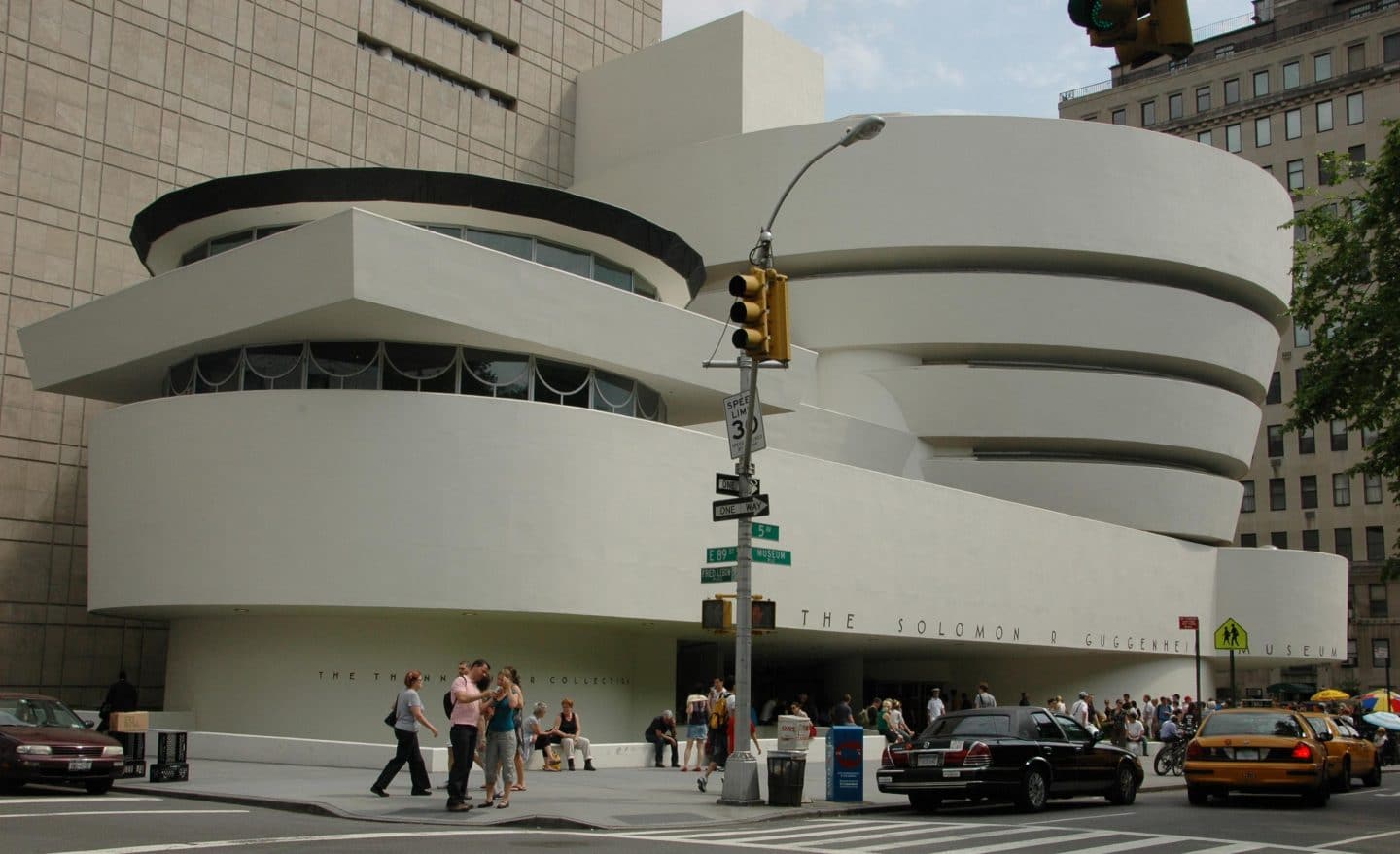Building Name
Solomon R. Guggenheim Museum
Architect
Frank Lloyd Wright
Altered: Gwathmey Siegel and Associates
Year(s) Built
1956-59
Aletered: 1988-92
Designation
Interior Landmark
Individual Landmark
Expanded Carnegie Hill Historic District

Project Information:
A Modern-style museum building designed by Frank Lloyd Wright and built in 1956-59, and subsequently enlarged by an addition designed by Gwathmy Siegel and Associates and built in 1988-92. Application is to modify designated interior spaces.
CB8 Hearing: 07/18/22 (Disapproved)
LPC Hearing: 08/02/22 (Approved)
FRIENDS Testimony:
The Guggenheim Museum is one of the rare examples of a complete work of art in architecture. As it is customary in modern architecture, every single aspect of this building was carefully designed, including utilitarian elements such as furniture. We are pleased to see that the proposed store furniture is inspired by original Frank Lloyd Wright’s pieces, instead of a contemporary non-descript aesthetic.
The existing museum store was first enclosed in the mid-seventies and altered to its current configuration in the early 1990s, during Gwathmey Siegel’s expansion. Despite not being part of Wright’s original design, the space is surrounded by his very characteristic geometric shapes derived from the simplification of natural forms. The original administration wing, known as the circular monitor and its lozenge-shaped staircase, and the concrete columns are a notable part of Wright’s quest for interpenetrating geometric shapes.
While we are not opposed to the reconfiguration of the store, FRIENDS believes the movable partition to be inappropriate, as it significantly impedes the legibility of Frank Lloyd Wright’s shapes and design. Additionally, the partition also interferes with the store lighting, resulting in a bland and dark space. We ask the applicant to rethink this aspect of the proposal, a solution as simple as lowering the height of the partition to match the point-of-sale cabinetry would provide staff the necessary space while allowing for the full appreciation of this exemplary building, and maintain the impact that natural light has in this part of the museum.

